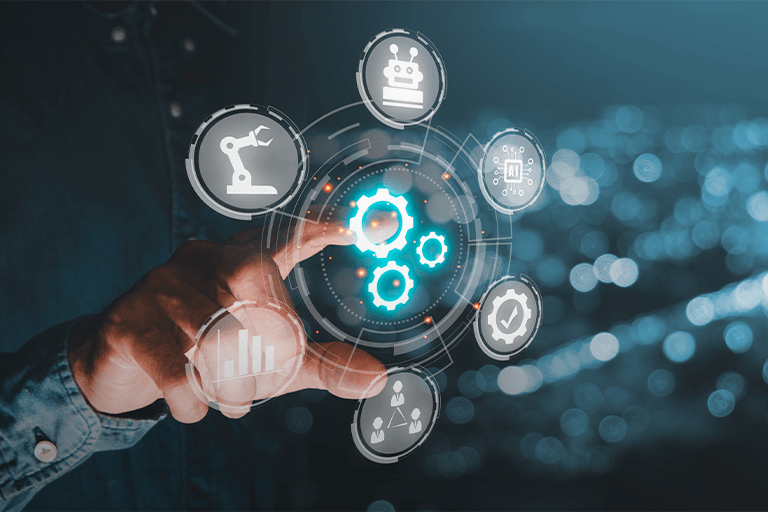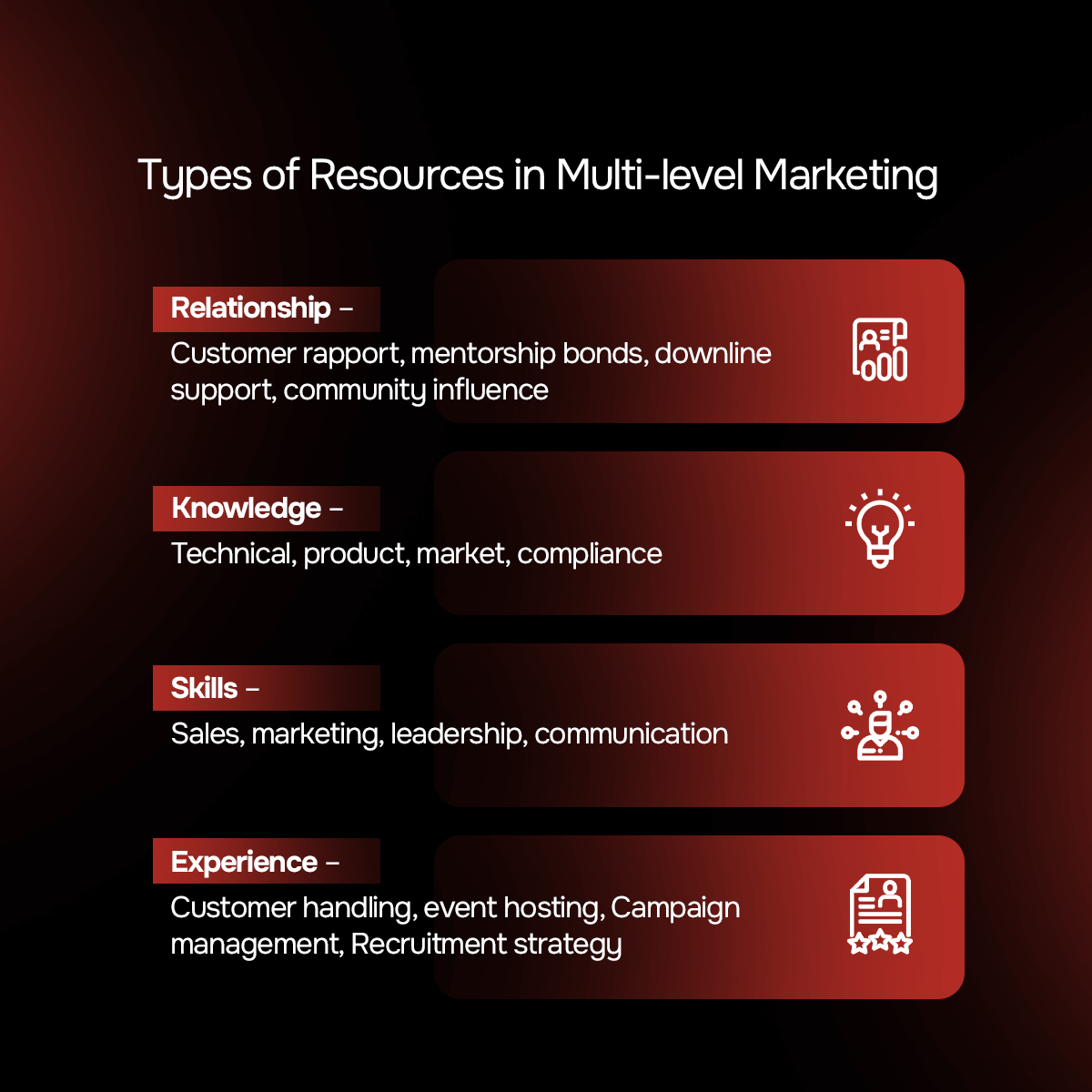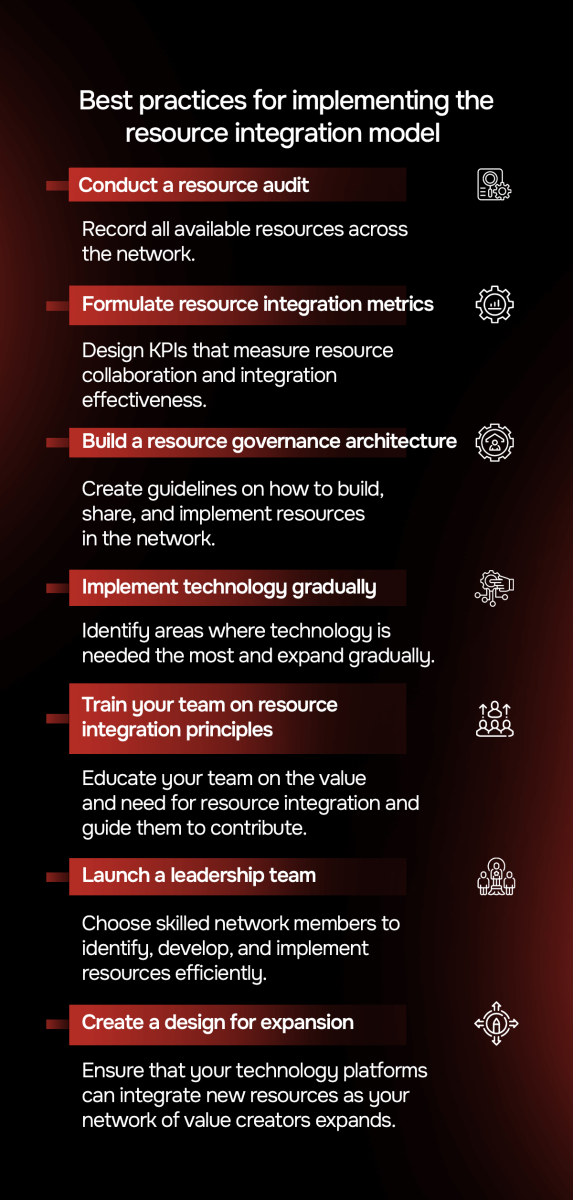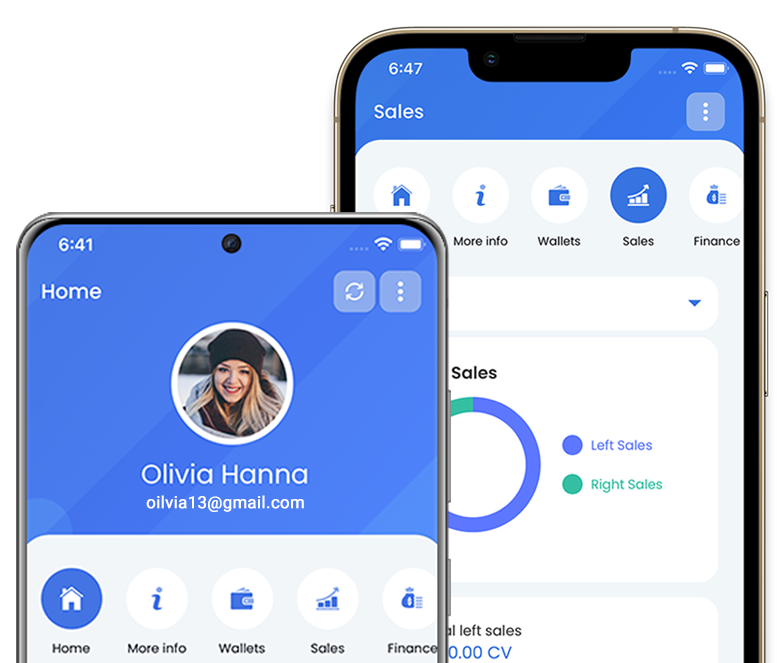The resource integration model in direct selling: Building a value-driven business through high performance MLM networks

Introduction
Direct selling companies resort to technology partners to create a value-based foundation where distributors are value creators and processes are competitive differentiators. Maintaining efficiency and accuracy are well handled by technology platforms and now is the time to create businesses that deliver value and distributors who co-create that with the businesses.
Direct selling is a coalescence of relationships, skills, knowledge, and experience of its network and members. MLM software platform has been long regarded as a tool that helps businesses manage operations with accuracy and efficiency. But today it has outgrown its defined capabilities to be one of the partners in value generation. This white paper analyzes the different resource types in direct selling and how their integration redefines the traditional concept of MLM platform.
Our research on “MLM software platform as a tool for value creation” reveals that direct selling companies who implement resource integration principles through their technology platforms are expected to achieve a 37% improvement in distributor retention rates and a 42% increase in lifetime value compared to companies that prioritize transactions over value creation.
Through this white paper we intend to analyze the potential of resource integration model in transforming the foundational relationship between technology, companies, and their distributors. We believe that during a time when direct selling businesses are going through a tough phase with competition from ecommerce platforms and changing customer expectations, resource integration models will become a competitive differentiator even in crowded markets.
Network-centric value creation with MLM platform
Resource integration proposes to alter the image of distributors to one of value creators. In the process, companies have to change their perception of a distributor from someone in their supply chain to a partner who is bound to create and share value throughout the network and beyond.
The knowledge and skills of every distributor will be shared to create a collaborative and innovation-driven network. This perspective change is best conveyed to distributors by giving them shared responsibilities in decision making, peer support, and customer engagement. When distributor responsibilities change from selling products to contributing value it strengthens the entire network.
MLM software platform for resource integration
In the resource integration model, MLM platforms are not tools and features that carry out specific functions. It is a platform that brings together resources and combines them to create value. Goals and strategies set around technology should not focus on what it can do but how its capabilities can be used to create value.
Build virtual communities where companies, distributors, and customers collaborate with each other, share information, and build relationships. This community aspect is so much superior to processing and recording transactions.
Visual display of resource skills such as distributor expertise, customer preferences, and community knowledge becomes easily accessible to the network.
Creating the right resource combination, that is to say, combining distributor insights with customer data and advanced tools can be used to create targeted campaigns and better customer experiences.
Measuring value creation not through conventional metrics like sales volumes or distributor-customer numbers but through identifying how resources are shared across the network. This method spots successful collaborations and top contributors who bring long-term growth to the company.
MLM platforms partner with resources within the MLM network to create value-based growth opportunities for the company. Technology is not a support tool that helps distributors sell or recruit; it is a support partner that enhances every capability of a distributor in new and engaging ways. When distributors use technology to complement their skills, they are also helping the platform grow. This mutually beneficial process reverberates across the network to create positive growth opportunities for associated network members and the organization.
Resource categories in MLM networks

The resource integration model has four main resource categories.
Relationship resources: The connections, trust and goodwill that distributors build with their customers, downlines, mentors, or uplines. These strong relationships create loyalty and improve communication that contributes to network health.
Knowledge resources: Well-documented information about products and policies, training materials, or market stats are considered as a resource for knowledge sharing across the network.
Skill resources: The abilities a distributor possesses in terms of sales, product demonstrations, training, leadership, and using tech tools.
Experience resources: The expertise of a distributor from years of experience in the industry in training the team, making better decisions, and developing best practices for network building.
Traditional approach vs. resource integration approach
| Resource category | Description | Traditional approach | Resource integration approach | Required platform capabilities |
|---|---|---|---|---|
| Relationship resources | Networks, connections, trust, and goodwill | Recruitment history. (Who recruited whom) | Relationships that bring loyalty and value | Social network analysis, relationship visualization, connection mapping |
| Knowledge resources | Product and policy information, training materials, and market stats | Standard documented format for entire network | Resources tailored for each member or team according to specific needs | Centralized knowledge libraries, search and recommendation tools, and contextual knowledge delivery systems |
| Skill resources | Sales techniques, product demonstrations, training skills, leadership capabilities, and using tech tools | Developed through a standardized training process | Identifies unique skillsets, matches them with the needs, and combines the findings to create personalized training process | Skill mapping, capability matching, development tracking |
| Experience resources | Expertise accrued through years of experience | Invisible and under-utilized | Documented and made available for the network through various programs | Experience repositories, narrative capture, contextual matching |
The structure and design of resource integration platform
Incorporating all the elements of resource integration demands an MLM platform that can unshackle itself from traditional approaches and limitations. The structure and design of an MLM platform with resource integration principles needs:
Resource mapping systems: Identifies the availability of resources in the network and organizes it to make it easily accessible.
Simple integration interfaces: Collaboration tools or dashboards that help distributors and customers access and combine available resources.
Value creation analytics: Advanced metrics that measure value creation by analyzing resource usage and growth they bring.
Network Intelligence: Algorithms that analyze activities and interactions of contributors to implement or recommend impactful practices to others in the network.
Resource identification and optimization within MLM network
Resources are scattered across the network. Identifying and grouping them is important to extract maximum benefits. Identification of leaders, skills, and tools in an expansive MLM network is not easy. But advanced technologies can rightly spot them and measure their contributions in organizational value creation.
Identifying the resources with technology
AI-powered performance monitoring systems can analyze distributor performance in various roles like mentorship, team building, sales, and technical knowledge. Performance results in these areas indicate the skill of a distributor in handling different real-life situations inside the network.
Social network analysis tools give a visual representation of relationships and their depth between distributors, customers, and prospects. This can be used to share resources or needed support that would turn them into long-term loyal relationships.
Centralized knowledge management systems like online communities, distributor portals, or discussion threads can capture, share, and store information to be accessed by network members in the future.
Experience tracking platforms scans for distributor experiences where they have used their expertise to solve difficult situations in sales or overcoming rejections. The system then delivers this as a go-to guide for distributors in similar situations. Experience thus becomes a learning resource for other members of the MLM network.
Ontologies, flexible resource classification systems, do not categorize resources as separate entities but let companies create a process through which they can discover the benefits of different resource combinations.
Improving the quality of resources
Every resource must be utilized to the maximum and this can be ensured with technology platforms that bring out the full value from each resource through knowledge sharing, skill development, or relationship building.
Technology platforms with matching algorithms connect distributors with a specific skill set or area of expertise to someone who is in need of support in that field.
Just-in-time learning systems deliver content relevant to the need and situation distributors are in. Training distributors contextually reinforces learning more than traditional learning sessions.
Cross-team resource sharing ensures that all teams across the network can share and collaborate with one another to learn new experiences and achieve better results together. This ensures that resources are not locked in within teams but open to a broader set of beneficiaries.
Development of distributor skills or enhancement of innate abilities is best achieved through personalized learning systems that allow distributors to learn and develop at their own pace without rushing through. The personalized distributor training systems recommend specific resources a distributor needs to become top value contributor in the organization.
Measuring integration efficiency
Even with advanced platforms, it is essential to evaluate their resource integration efficiency. The resource integration model introduces new metrics to evaluate the effectiveness of technology.
Resource utilization rate: Keeps a check on the resources to know if they are used properly.
Integration velocity: Tracks the adaptability of the network to new resources such as technology, tools, or training methods.
Resource diversity index: Measures the variety of resources available in a network. High index means a great mix of skills, capabilities, and connections.
Value creation quotient: Evaluates the effectiveness of resource integration in bringing out positive results across sales, customer retention, distributor performance, etc.
The difference in monitoring traditional KPIs and resource integration metrics is that the former concentrates on outcomes and the latter focuses on processes that contribute to these outcomes.
Develop high performance distributor teams with an advanced MLM platform integrated with an AI-powered training system.
Get Live DemoBuilding a network of value creators
Transforming one distributor to a value creator is easy but creating a network of value creators is a demanding responsibility. The resource integration model does this subtly but steadily through processes, people, and skills. Every distributor in the resource integration model changes their role from a salesperson to value co-creator. MLM software platform helps them in the process to identify customer needs and build relationships based on value rather than sales.
MLM software platform features centered on customer experiences like personalized communication tools and product recommendations and feedback systems provide insights for distributors to create a value-based selling process. Every resource that adds value to the distributor’s journey is placed at their fingertips to build stronger customer relationships. Technology platforms create virtual collaboration spaces like online brand communities and distributor forums for distributors to work as a team in solving customer challenges.
With technology in focus, distributors mature from a mere product delivery agent’s role to a valued organizational asset. They step into roles which were once reserved for corporate MLM leaders. The resource integration model challenges distributors to take ownership of customer relationships, innovation, and growth to create a sense of responsibility and fulfillment.
Technology backs value creation
MLM platforms that allow customization of features for compensation plan management, commission management, network management and the like, now create opportunities for resource integration with a new set of features.
Ecosystem connectors: APIs and integration tools establish connections with distributors, customers, and the company. Communication becomes easier in an integrated ecosystem and transfer of resources can be smoother.
Personalization engines: Product recommendations for customers, personalized training for distributors, and insights for process and strategy optimization for organizations are carried out efficiently through MLM personalization engines. Value added strategies like cross-selling and upselling are delivered not as promotions but as a value offering to customers.
Collaborative workspaces: Remote distributor teams can work together, share ideas, and accomplish group goals through digital workspaces. Communicating and collaborating with fellow network members keeps distributors engaged and confident in their value creation journeys.
Customer collaboration portals: Customer spaces within the platform are an arena for customers to record their feedback, host product videos, bring in referrals, and talk to new customers about their brand experience. This customer resource sharing adds to brand loyalty, trust, and improved services.
| Role of Technology in Value Creation | ||||
|---|---|---|---|---|
| Value co-creation element | Traditional approach | Resource integration approach | Technology tools for value creation | Expected business impact |
| Distributor role | Product seller or services provider | Value contributor who uses different resources to create value | Resource mapping systems, skill visualization tools | 47% higher customer satisfaction, 39% increased loyalty |
| Customer engagement | Buyer of product or services | Active participant in value creation | Customer collaboration portals, Preference discovery tools | 53% increase in customer lifetime value, 41% increase in retention rates |
| Product development | Standard process for R&D with low or no participant contributions | Product innovation through insights from distributor-customer interactions | Idea capture systems, pattern recognition analytics | 74% faster time-to-market, 63% increase in new product adoption |
| Knowledge creation | Leader to downline knowledge transfer | Free flow and open sharing of knowledge among all distributors in the network | Centralized knowledge libraries, Experience sharing platforms | 58% reduction in problem resolution time, 37% improvement in best practice adoption |
| Market intelligence | Less frequent research studies | Continuous generation of real-time insights from thousands of customer interactions | Sentiment analysis systems, trend identification tools | 42% improved accuracy in market forecasting, 56% faster response to market shifts |
New value metrics to measure distributor success
Distributor performance results in the resource integration model are measured through a special set of metrics. These metrics indicate the resource contributions of each distributor in relation to customer relationships, utilization of resources, innovations they bring into the network, and their adaptability to new resource introductions.
Customer relationship depth: Measures the trust and longevity of customer relationships.
Resource access equity: Evaluates fairness in the distribution of resources across the network irrespective of distributor rank or level.
Innovation rate: Tracks the frequency and impact of new ideas or approaches introduced by distributors in the network.
Network resilience: Measures the adaptability of distributor teams to market fluctuations, internal challenges, and strategy adoption.
These metrics, different from the traditional ones, help companies understand how much value each distributor brings and in what way for the growth of the company.
Discover how we build resilient businesses with advanced MLM functionalities
Future of resource integration technologies
Resource integration in multi-level marketing will develop as a successful business model with advancements in technology complementing it. Emerging technologies such as AI, Blockchain, and Quantum Computing are a promise for the future of enhanced value creation through the model.
AI for identification: Artificial intelligence will track down each and every resource to ensure that resources are not wasted or under utilized.
Blockchain for authentication: Blockchain will create a secure process to verify the authenticity of resources. It ensures that all shared resources are valid and accurate. Future KYC processes will be processed through blockchain-powered systems with privacy settings that can be controlled by the user.
Extended Reality for visualization: AR and VR technologies will create new experiences with resources that are complex like setting training sessions in engaging digital environments with simulations that help distributors learn practical application of training in real life. Product demonstrations and customer shopping experiences will take on new and exciting dimensions with extended reality techniques.
Quantum computing for optimization: Quantum computing can simplify complexities in resource matching and allocation problems. It can create right resource combinations and recognize patterns across the network for resource optimization.
Ambient intelligence for contextual delivery: Ambient Intelligence (AmI) builds start environments that sense real-time situations and automatically provide relevant resources. Future applications of AmI in MLM resource integration model will include personalized training recommendations for distributors after identifying skill gaps and in customer support, offering relevant insights during a customer interaction without the need for a search.
These technologies merge to create “Integrated Intelligence Networks” where humans and technologies go hand in hand to create resource combinations that are more innovative and effective than what either could achieve single handedly.

Future of value co-creation in direct selling
Direct selling companies will expand their resource ecosystems with external partners like service providers, technology platforms, training experts, and even customers. This bigger network of resources will create more opportunities for value creation. In such an open organizational framework, distributors will become real entrepreneurs through personal branding and creating innovative customer solutions by combining resources.
MLM platforms will host marketplaces where companies and distributors can buy, sell, or exchange resources. Resource integration models will diminish the traditional limitations of organizational structures to narrow down the boundaries between teams, departments, and even companies.
Resource integration model in direct selling will create an open environment where resource sharing becomes widespread without limitations, new opportunities are created at every level and networks become powerful forces of value creation.
The need to focus on the resource integration model
Resource integration model is anchored in value creation by combining human and technological elements. Long-term relationships, trust, and loyalty are the benefits, we know, but moving into the future businesses will achieve far more than this. Resource integration model will create a unique identity for direct selling businesses through the power of human connection.
Build trust and loyalty among your customer network with blockchain-powered MLM platform.
Get Live DemoEpixel MLM Software anchored 100+ network marketing companies to success through their business process automation in more than 88 countries. Let Epixel MLM Platform revolutionize your MLM business with 100+ proven features intelligently tuned for small, medium, and large enterprises.



